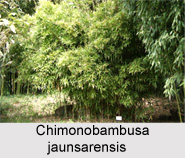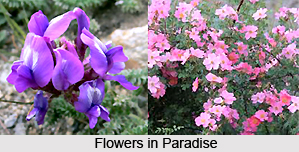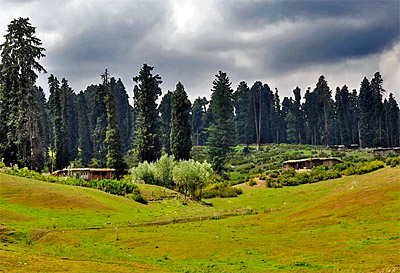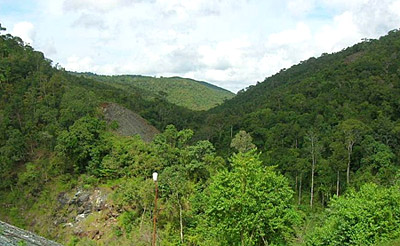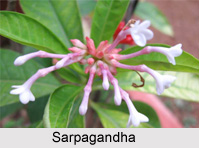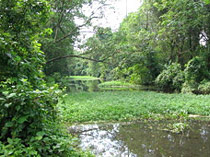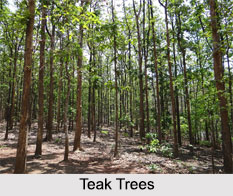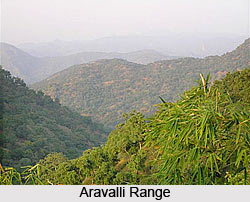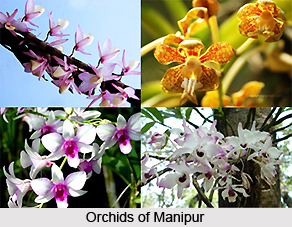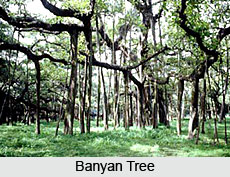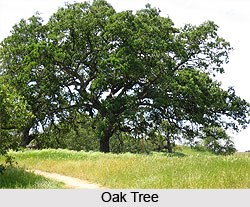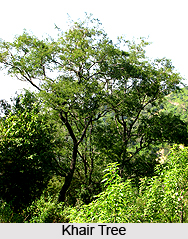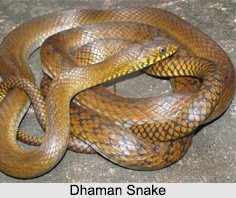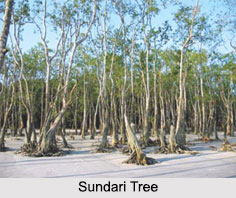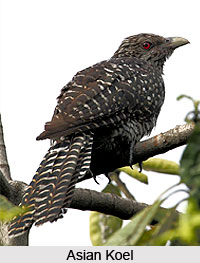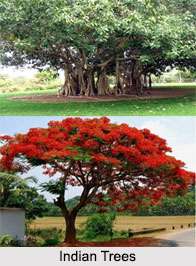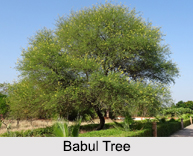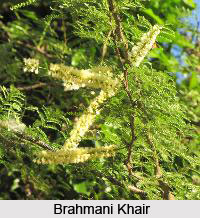 Brahmani Khair, a medium sized drought resistant tree, is native to India and Sri Lanka and grows to a maximum 12 m tall and up to 1m in breadth. Brahmani Khair or Somasara is an Indian medicinal plant and is found scattered in dry thorn or scrub forests of western and southern India from Gujarat and Madhya Pradesh through Maharashtra, Andhra Pradesh, Karnataka and Tamil Nadu to the eastern slopes of the Western Ghats. Commonly found in dry deciduous forest. Identified by rough, grey bark cracking into oblong pieces; small, lightly curved twin intra-stipular prickles; rachis of the leaf grooved with a large gland on the petiole and pale yellow flowers in axillary spikes. The growth of this species is very slow except in rich soils of a porous nature. The tree is harvested from the wild for local use as a medicine and source of wood and a gum.
Brahmani Khair, a medium sized drought resistant tree, is native to India and Sri Lanka and grows to a maximum 12 m tall and up to 1m in breadth. Brahmani Khair or Somasara is an Indian medicinal plant and is found scattered in dry thorn or scrub forests of western and southern India from Gujarat and Madhya Pradesh through Maharashtra, Andhra Pradesh, Karnataka and Tamil Nadu to the eastern slopes of the Western Ghats. Commonly found in dry deciduous forest. Identified by rough, grey bark cracking into oblong pieces; small, lightly curved twin intra-stipular prickles; rachis of the leaf grooved with a large gland on the petiole and pale yellow flowers in axillary spikes. The growth of this species is very slow except in rich soils of a porous nature. The tree is harvested from the wild for local use as a medicine and source of wood and a gum.
Different Names of Brahmani Khair
The botanical name of Brahmani Khair plant is "Acacia Ferruginea DC". Brahmani Khair or Somasara is also known as "Khair Bora" in Hindi, "Kanta Chira" in Oriya, "Inupa Tumma" in Telugu and "Somasara" in Sanskrit languages.
Characteristic Features of Brahmani Khair
Brahmani Khair is a deciduous tree sized from small to medium with rough, rusty bark and glabrous branchlets usually armed with prickles. The twigs are wiry and glabrous, being reddish or green in colour, while the primary roots are long and thin. Leaves are bipinnate. The flowers are pale yellow in colour, sessile, borne in dense, axillary spikes and fruits are stalked, flat, thin, brown, reticulately veined, glabrous and indehiscent. The glabrous pods filled with a sweetish pulp and are dark brown in colour. Brahmani Khair seeds are oblong and flat ovate, being greenish or brownish in colour. In the Indian subcontinent, flowers appear between the months of March and May, and pods ripen between November and February. Brahmani Khair prefers heavy red soils and is also tolerant to shallow stony surfaces drought tolerant.
Medicinal Values of Brahmani Khair
In Ayurveda the astringent bark is considered useful for treating itching, leucoderma, ulcers, stomatitis and diseases of the blood. In Unani medicine in India the extract of the leaves is considered astringent, styptic and tonic; it is used to stop suppuration, to enrich the blood, and in the treatment of eye diseases, diarrhoea, dysentery, gonorrhoea, gleets, burns and scalds, and is thought to be beneficial to the alimentary and urinary tracts. The gum exuded from the cut bark possesses demulcent and emollient properties. A bark decoction, in combination with ginger is frequently used as an astringent for the teeth.
